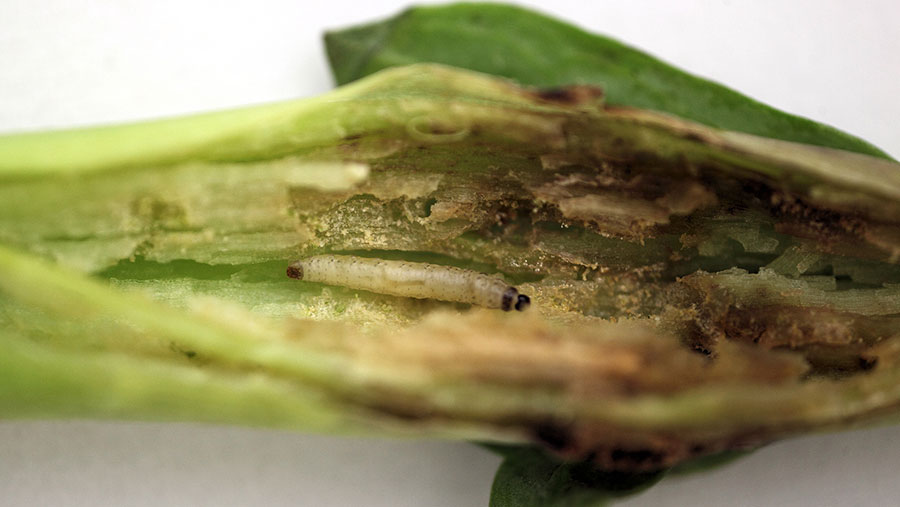More than half of OSR plants infested with flea beetle larvae
 © Blackthorn Arable
© Blackthorn Arable More than half of oilseed rape crops that survived last autumn’s flea beetle onslaught are infested with larvae at levels that will hit yields.
Last autumn saw the worst cabbage stem flea beetle invasion to hit OSR crops since the loss of neoniotinoid seed treatments, resulting in an average 11% of crops failing to establish in England.
This is according to a survey carried out by Association of Independent Crop Consultant (AICC) agronomists, which showed that the worst region is the East Midlands, where 16% was lost.
At the recent AICC conference held near Towcester, Northamptonshire, agronomist Peter Griffith said the figures show a worsening situation. A similar survey in 2016 had an overall average of 7%.
See also: Drought and pests give rapeseed growers a tough start
“We’ve seen a big jump in all regions except the East, showing that the problem is getting worse,” he said.
The figures reflect that last autumn was the perfect reproductive year for cabbage stem flea beetle. To assess the effect of the pest on surviving crops, the AICC carried out another survey last December.
It involved 10 agronomists in four regions inspecting 93 fields. It revealed that 52.9% of plants assessed had five or more larvae, the threshold for spraying.
“There is a significant problem out there and it’s likely to affect yields,” said AICC agronomist Jonathan James of CCC Agronomy.
He added that having five larvae a plant can potentially cost 0.5t/ha in lost yield.
Solutions
Controlling larvae is fraught with difficulty, as spraying is not really an effective option.
Looking at the survey data, Mr James noted a trend of lower larvae numbers in later-drilled crops, although more data is needed before any conclusions can be made.
One potential approach being tested by a group of farmers this winter is the removal of leaves through grazing or mowing.
This then exposes the larvae to the cold and predators, making them much less likely to survive and damage plants.
Eight farmers are trialling the technique under the Innovative Farmers programme, overseen by ADAS researcher Sacha White.
It follows on from ADAS plot trials that suggest the defoliation method led to a reduction in larvae numbers, up to 60% in some plots.
The group is looking to see if this method could work at field scale, running alongside further ADAS trials. Defoliation has already taken place, including the use of sheep.
Cabbage stem flea beetle larvae
- Newly hatched larvae enter plants and feed in petioles from October to early April.
- They bore into leaf petioles and, later, into the main stems, which can destroy the growing points and affect plant vigour
- Towards the end of spring, larvae leave the plant and pupate in the soil.
Flea beetle in Kenya
Cabbage stem flea beetle is also a problem for oilseed rape growers in Kenya, despite still being able to use neonicotinoid seed treatments there.
AICC agronomist David Jones moved to Kenya two years ago and advises arable farmers in this part of East Africa. Spring OSR is a key crop and growers can achieve good yields. One crop of Belinda delivered 5t/ha.
That’s because the area Mr Jones covers is at higher altitude (2,800-3,000m), leading to good growing conditions with high light intensity and temperatures between 10C and 30C, despite being on the equator. The rainfall on his driest farm is similar to that found in East Kent.
However, growers do suffer from cabbage stem flea beetle attacks, affecting establishment. In fact, he told the AICC conference that he had lost two variety trials due to the pest last season.
One approach he believes can help farmers mitigate flea beetle is “moisture seeking”, where farmers drill deeper during dry spell where there is moisture. He has developed a modified drill with tines to avoid problems with excess soil cover, which can lead to seed failure.

